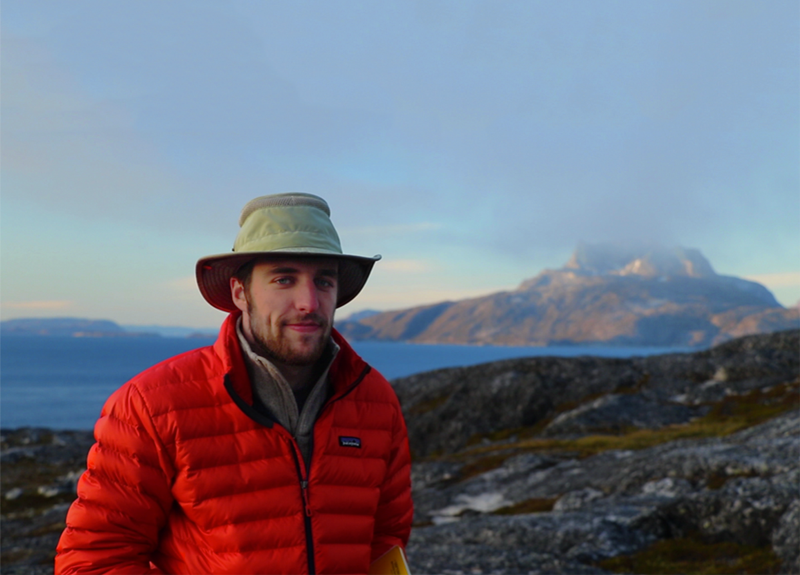Career-based learning for students entering the new energy economy
In early 2013, three individuals met over dinner to celebrate a new investment partnership. Bert Valdman (WCAS ’84), at the time President of Edison Energy, had invested in Clean Power Finance, a solar energy financing company led by founder Gary Kremen (McC ’85) and CEO Nat Kreamer (C ’99). In conversation, they came to realize that they’d all graduated from Northwestern, at different times, each arriving in the energy sector by different, sometimes happenstance, paths. Wishing that more energy and sustainability curricula had been available to them as students, the three resolved to make their years of experience in the energy industry an asset to current Northwestern students. They envisioned a seminar where students from law, business, and technical backgrounds could discuss complex problems currently facing the energy industry, as introduced by the leaders at the cutting edge.
“If we could go back to our time at Northwestern, and do it all over again, we’d seize the opportunity to learn from the people who are driving the industry,” says Valdman, now president and CEO of Optimum Energy, a software company that specializes in enabling customers to reduce their energy and water use.
Initially funded by Edison International, the parent company of Edison Energy, the ISEN-run seminar, called Powering the Future, is now in its fifth year. Of the 100 students who have participated over that time, 60 percent have gone on directly to careers in sustainability or energy. Most others are completing their degrees.
Kreamer, Kremen, and Valdman, drawing from their own extensive personal and professional networks, have delivered an all-star roster of speakers, including: David Crane, senior operating executive at Pegasus Capital Advisors and former president and CEO of NRG Energy; Jon Powers, co-founder of Clean Capital and federal chief sustainability officer in the Obama administration; and Doug Kirkpatrick, general partner at InnerProduct Partners, and former chief scientist at the Defense Advanced Research Projects Agency in the George W. Bush administration.
“All the seminar speakers have spent considerable time in the business, and we wanted to bring that world, as it related to new energy technologies and policies, into the classroom,” Valdman says.
The seminar also offers students a unique opportunity to understand the energy industry in its current state of transition. Over the seminar’s four years, it’s rare for a speaker to have been invited twice, to ensure diverse and timely perspectives.
“Powering the Future puts you in the same room as some of the key decision makers, so you can quickly get up to speed on current issues and build relationships that pay dividends for years,” says KJ Plank (KSM ’16), a former seminar student.
The right speakers at the right time
In the fall of 2014, Jon Wellinghoff, former chairman of the Federal Energy Regulatory Commission (FERC), was exactly where he wanted to be — in the chaotic middle of an energy transition. A year out of his role at the agency, he was co-chairing the energy team
at Stoel Rives, a business law firm headquartered in Portland, Oregon, and building on the changes he implemented at FERC. These included, among others, the landmark Order 1000, which encouraged the integration of solar and wind installations into regional power transmission projects. Top of mind for him was the dichotomy between the traditional utility system and consumer adoption of new technologies, which posed both financial and stability challenges for the grid.
“It was an eye-opening experience that drove home the importance of clean energy, not only for the environment, but also for our energy security.” — KJ Plank, Kellogg School of Management student
Wellinghoff was also in the midst of reframing the future of energy power markets, conceptualizing the development of a robust and scalable market structure for a more efficient grid, integrating consumer choice and cleaner energy. The controversial model called for taking energy distribution systems out of the hands of the utility company and giving control to an independent body, with the goal of rapidly acquiring as much demand response, solar energy, and storage as possible under the existing grid infrastructure. Wellinghoff and his associates submitted this concept to the Smart Electric Power Alliance’s 51st State Project, which provides a safe platform for energy experts and industry leaders to discuss innovation in the energy sector.
At the time, Wellinghoff didn’t know that his proposal would set the foundation for the New York Public Service Commission’s efforts to reform the state’s electricity system. The proposal recommended an independent distribution system operator, which would alleviate the logistical challenges of renewable integration for utilities by handling the day-to-day operations, introducing incentives, and opening up the grid to third-party competitors.
Amid all this, Wellinghoff got a call from one of his clients, Nat Kreamer. “Nat called to invite me to participate in a unique forum at Northwestern that he was running,” Wellinghoff says. “He was reaching out to people who were on the frontlines of the transition and willing to be candid about it.”
For Wellinghoff, the timing couldn’t have been better.
“I was challenging myself every day to think 5-10 years out — and problem-solving for consumers and local governments who were clear about the direction they wanted to go in,” he says. “I could talk on a tangible timeline about what I was seeing.”
In addition to providing an overview of his role at FERC and revealing the 51st State draft, he thought it was important to speak on an obvious and emerging threat to the grid — security. To underscore just how important this issue is, Wellinghoff gave seminar participants an unclassified account of the April 2013 sniper attack on the Pacific Gas and Electric Company’s Metcalf Transmission Substation in Coyote, California.
He vividly recalled that day, when gunmen fired at 17 electrical transformers, causing $15 million worth of damage and then disappeared. To avert a blackout, grid officials rerouted power from nearby power plants.
For student Plank, Wellinghoff’s account of the incident made for one of the most memorable classes of the seminar.
“It was an eye-opening experience that drove home the importance of clean energy, not only for the environment, but also for our energy security,” says Plank.
Powering the Future draws students like Plank, who came to study business at Northwestern after earning an undergraduate degree in mechanical engineering from Stanford University and working as a strategy and operations consultant at Slalom Consulting in Seattle. After graduating from Northwestern, Plank went on to work as a strategic planning project manager at Southern California Edison.
“The knowledge I obtained and the relationships I built opened a great opportunity to do strategy work,” Plank says.
Combining foundation with demand
Northwestern is among a growing number of universities responding to student demand for a career-focused curriculum in energy.
At schools around the country, students are either specializing in the energy application of their degree through focused master’s programs, or choosing to gain a broader understanding of the technical, business, and policy aspects of the energy sector. Programs such as Stanford’s energy resources engineering master’s and Texas A&M’s petroleum engineering master’s draw students with a foundation in engineering who are looking to specialize and improve their readiness before entering the job market.
Columbia University’s program in climate and society and Colorado State’s MBA in global, social, and sustainable enterprise take a broader approach, inviting applicants from a variety of backgrounds to bring their perspectives to the table. Powerhouse programs in sustainability, such as those offered at Arizona State University’s School of Sustainability and the University of North Carolina at Chapel Hill, take both approaches.
“Without the foundation and insight I gained from the seminar, it would be so much more difficult to understand the challenges that developers, technologists, and entrepreneurs face.” — Olivia Lugar, Northwestern Law student
When Powering the Future was being developed at Northwestern, the founders saw the emerging need for students to supplement their degrees with industry-specific, current knowledge.
“We recognized that no one was teaching anything like it,” Kreamer says. “We could see that students were coming out of top universities with very strong backgrounds in traditional academic areas, but they would need to spend a period of time in the energy business before they could understand it.”
Kreamer, Kremen, and Valdman decided to open the course to students with technical, business, and policy backgrounds who could present those perspectives on challenges to proposed solutions.
Among those was law student Olivia Lugar, who enrolled in Powering the Future to pursue her interest in advising developers working on renewable energy projects.
“Without the foundation and insight I gained from the seminar, it would be so much more difficult to understand the challenges that developers, technologists, and entrepreneurs face,” Lugar says.
Another student, Jonathan Pfluger, a materials science and engineering PhD candidate, recalls a class where the CEOs of both the Solar Energy Industries Association and the American Wind Energy Association were invited to have a candid conversation about their competing interests. Since first meeting through the seminar, the CEOs have collaborated to launch the Renewable Energy Jobs Communications Campaign, a consortium of solar and wind stakeholders running an 18-month campaign to influence local, state, and federal policy.
“Having the opportunity to be in a room with the leaders at the forefront of the clean energy transition pushed me to think critically about the application of my own scientific research,” says Pfluger.
Interdisciplinary understanding is a key goal for the seminar, Kreamer says.
“If you think of academic excellence, you typically associate that with becoming an expert on a single subject. But as you become smarter in one area of research, your world becomes narrower,” he says. “We envision this class as being one of the few moments at a graduate level where you’re truly exposed to different disciplines and different takes on an issue.”
Answering the call
The Powering the Future vision is echoed elsewhere at Northwestern, where the Kellogg School of Management is considering an energy and sustainability career track in its two-year MBA program. Called a “curriculum pathway,” the specialization will offer classes including natural resource and public economics, strategy in energy markets, corporate sustainability, and green finance.
Kellogg professors Klaus Weber and Megan Busse, the pathway’s creators, are working toward an interdisciplinary program.
“A new energy professional needs to understand the basic technical functions of the grid, as well as the policy environment, because it’s a highly regulated market on the extraction, production, and distribution sides,” Weber says.
The Kellogg pathway models other MBA programs — including those at Berkeley and Duke — that have a strong focus on energy.
“The basic principle for the pathway at Kellogg is that it encompasses industries and sectors for which the management of natural resources is integral to the business — industries such as energy, food, or agriculture,” Weber says. “These are industries where environmental issues aren’t a social-responsibility strategy, but where they are part of the competitive dynamics, and you depend on them for sustaining the industry itself.”
And the adoption of that mindset isn’t slowing down, he notes.
“Our students know that the current national regulatory environment won’t change the course of transition to an integrated, renewable energy grid, and they’re taking steps to be prepared for working in a clean energy future,” Weber says.
With that goal in mind, both Weber and Valdman plan to introduce international case studies into their respective energy curricula.
“We want to bring in the perspectives of countries that are way ahead of the US, and developing countries where there is a lot of opportunity for introducing advanced models and infrastructure,” Valdman says. “The energy industry is evolving around the world — and we have to prepare our students for this rapidly evolving and exciting transition.”






